Assessing the Maker Lab, Maker Space, Hacker Lab, Digital Cultures Lab
We’re a year in; it was a year ago today that we opened a space where people could use 3D printers and play with other forms of technology. It’s been an interesting year with more valleys than peaks, but one that we’ve learned a lot from. We got lots of great press, met some really interesting and engaged people, and kept a few students employed doing fun stuff. And, if those are our key takeaways, that’s a successful venture.
What’s in a Name?
As can be told from the title above, one of the first issues we had with the space was what to call it. As you can see from the photo below, the space is pretty small–just over 300 square feet all in. It’s also a fishbowl, but more on that in a moment. Point is, it was never going to be a Maker Space in the sense that most conversations imagine such a space to be; it was simply too small, lacked adequate ventilation, and was ill-equipped for the demands of a true Maker Space.
That said, we didn’t really give the name much thought. We had been looking at bigger spaces and our motivation was to start a Maker Space and so that was the name we gave it in all our dialogue about the space and what eventually everyone started calling it. In hindsight, calling it a Maker Space as we did in the beginning was a mistake. It set expectations way over what we actually had and sent us on planning missions the execution of which was well beyond our means. The key takeaway here was that we really should have thought about the name more and called it a “hackerspace” or something esoteric and opaque: “digital cultures lab.” Doing so would probably have meant less press and hindered our ability to capitalize on a wave of discussions about Maker Spaces, but it would have made it much easier to manage expectations.
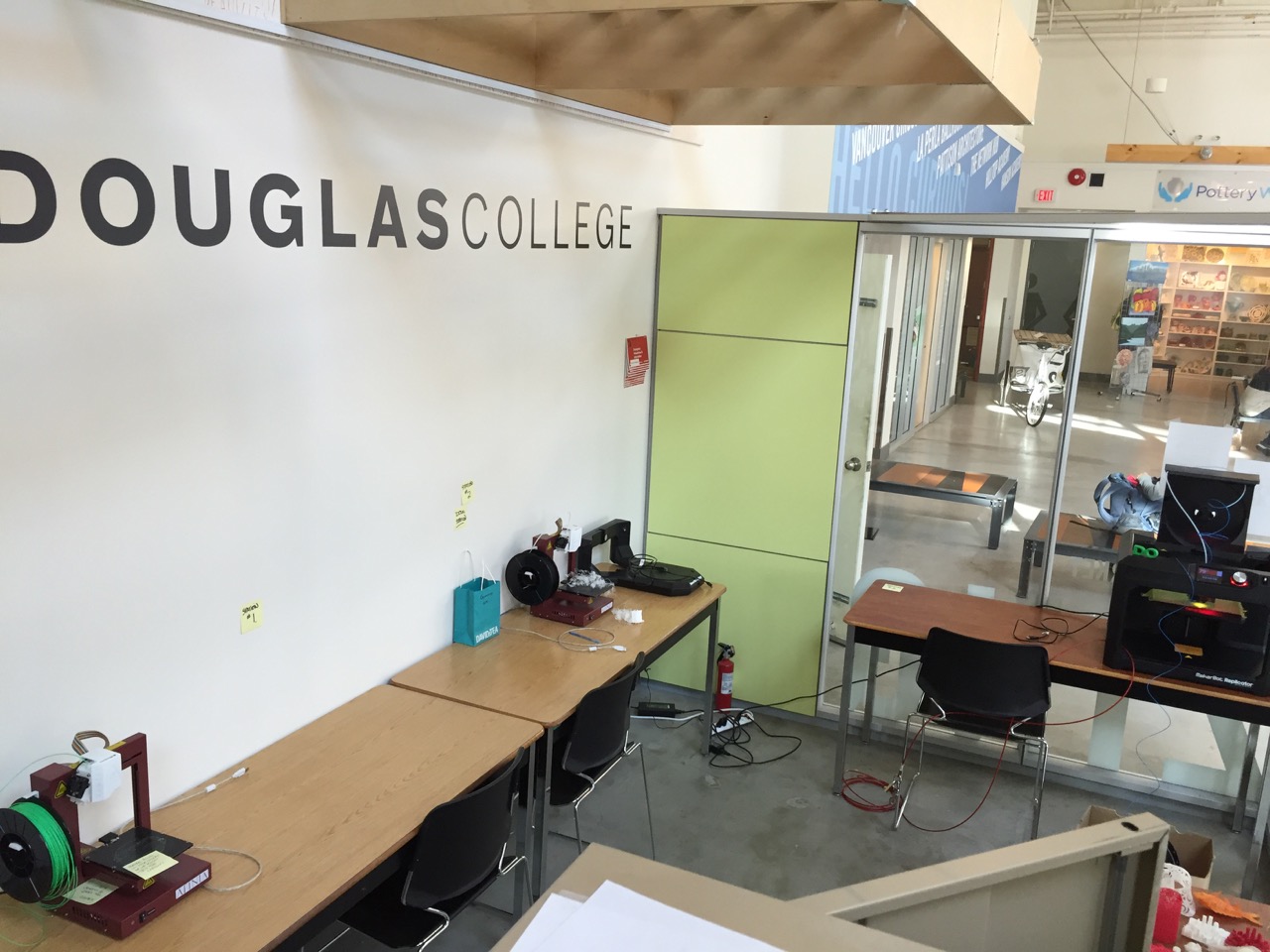
At the same time, the name set us on a course I’m not sure we should have been on. The name hurt us because it made us think beyond the capacity of the space. The result was a series of failures and half-starts to say nothing of that sinking feeling where a potential partner might feel that you’ve wasted their time. All this to say that the name is important for these spaces because it guides expectations both inside and outside the space itself. Not only are others using that name as a signal for a set of expectations, but the team responsible for the space is using that name to guide their activities, actions, and outcomes.
Location, Location, Location
We were so incredibly fortunate to be given our space–a purpose built, brand new space–by the New Westminster (British Columbia) River Market. I can’t imagine doing this venture with anyone more gracious, patient, and helpful than the folks who run the River Market. That said, the distance between the space and the College (about 5 city blocks and over a railway bridge) has been hard to “bridge.”
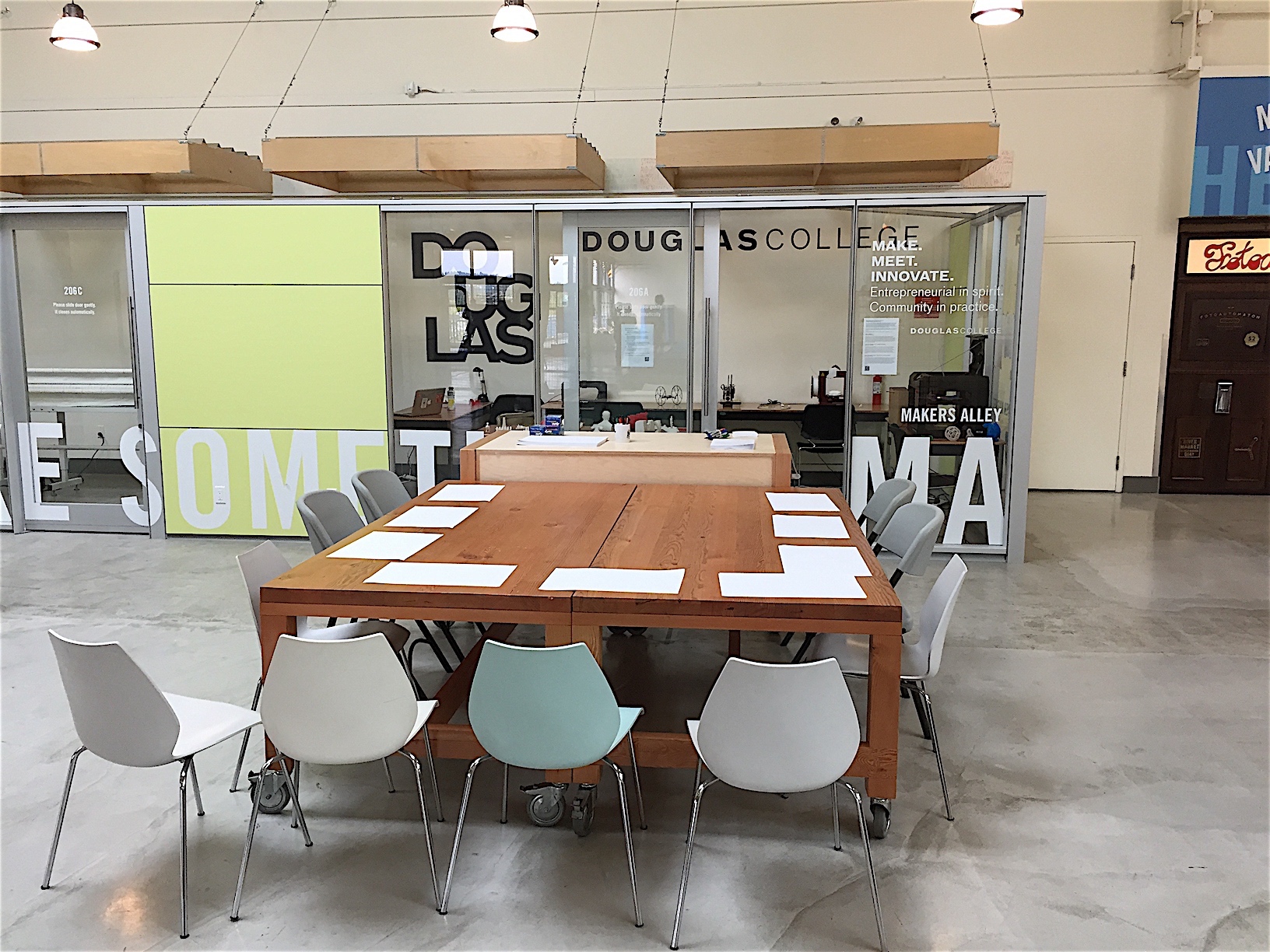
The bottom line is that students where I work are commuter students. They are not, typically, out in the community hanging out and living near the College. That fact alone makes it difficult to generate interest in a space that students do not encounter as part of their day-to-day interactions with the campus. Before we started this venture, I was an advocate of putting spaces like Makerspaces or Hackerspaces in the College library and that hasn’t changed. If we had the facilities that would allow for a move to the library, I would jump at a transfer to that space.
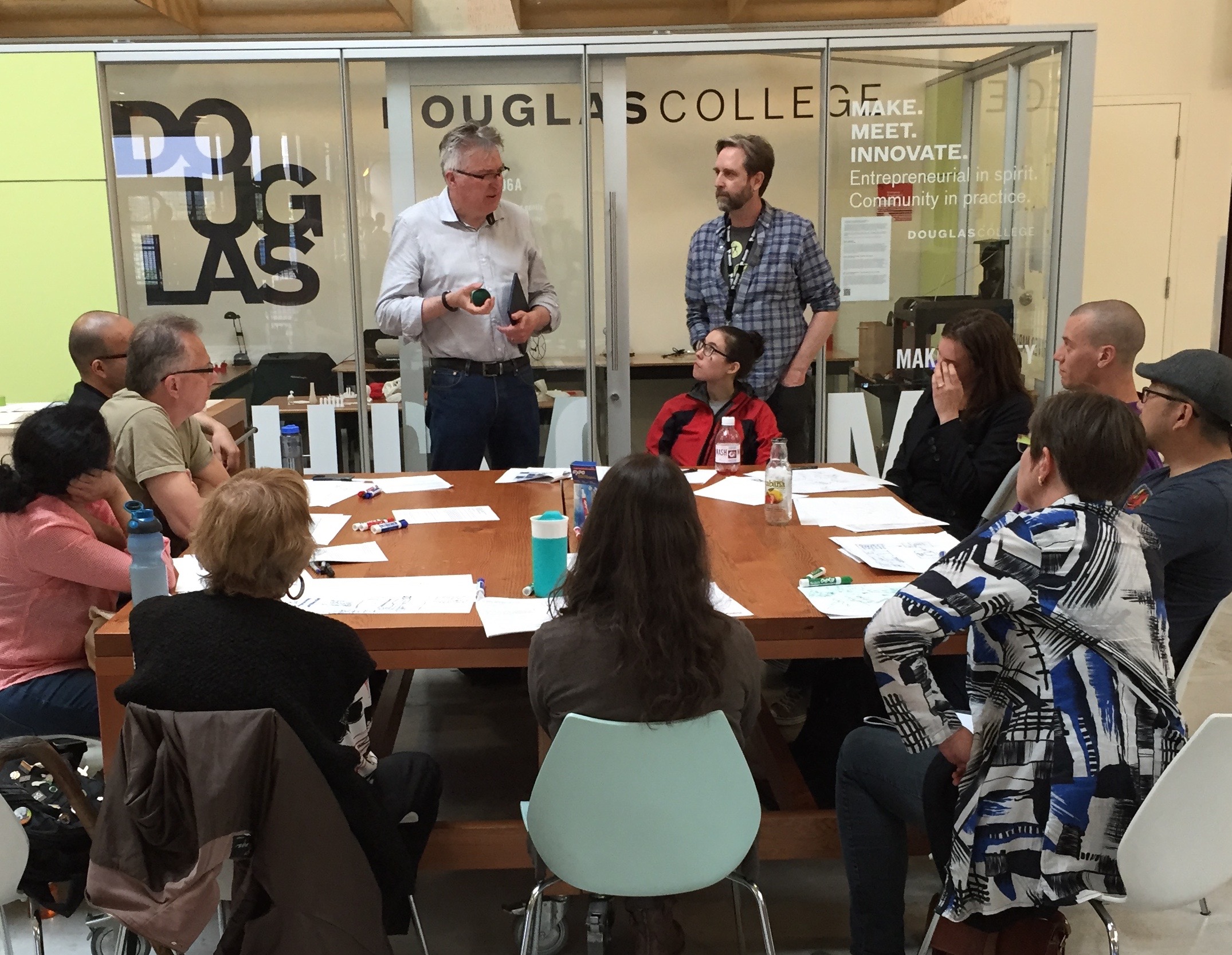
The other interesting sidebar is that being out in the community comes with a series of unforeseen complexities. One of the most frequent is people who recognize the branding of the Makerspace and stop by to query anyone who is in the space about the activities, policies, and general politics of the institution itself. Rather than engaging with the space as it stands, these people want to engage in a makeshift town-hall on the direction of the College or the political processes it might represent. The result, particularly if students are staffing the space, can be an uncomfortable confrontation or clash of directions. In short, some interesting training scenarios have emerged.
Time, Time, Time is Not on Our Side
A persistent issue at the Lab has been staffing. While I am the director and I run the show, I have no devoted time professionally to give to the space. I have teaching, coordinating, and living to take care of and I don’t get paid to run the Lab. I knew this going in, so I give it as much time as I can, move things along on the scheduling and equipment front, and generally manage the space as best I can. The plan for setting up the Lab included hiring one student research assistant (RA) from the College to staff the space during the week and take care of interactions, activities, and generally execute anything we needed done at the Lab. To this end, the two student RAs have been fantastic and I know they have both learned a lot from being left on their own a lot of the time to figure out the machines, processes, and workarounds. Our first RA, Cora Fanucchi did great helping get the space up and running and generally figuring out some of the initial processes we would need to pull it off. Our current RA, Douglas Raymond has pulled the lab in new directions and really pushed getting the machines working on a consistent basis. They’re both awesome.
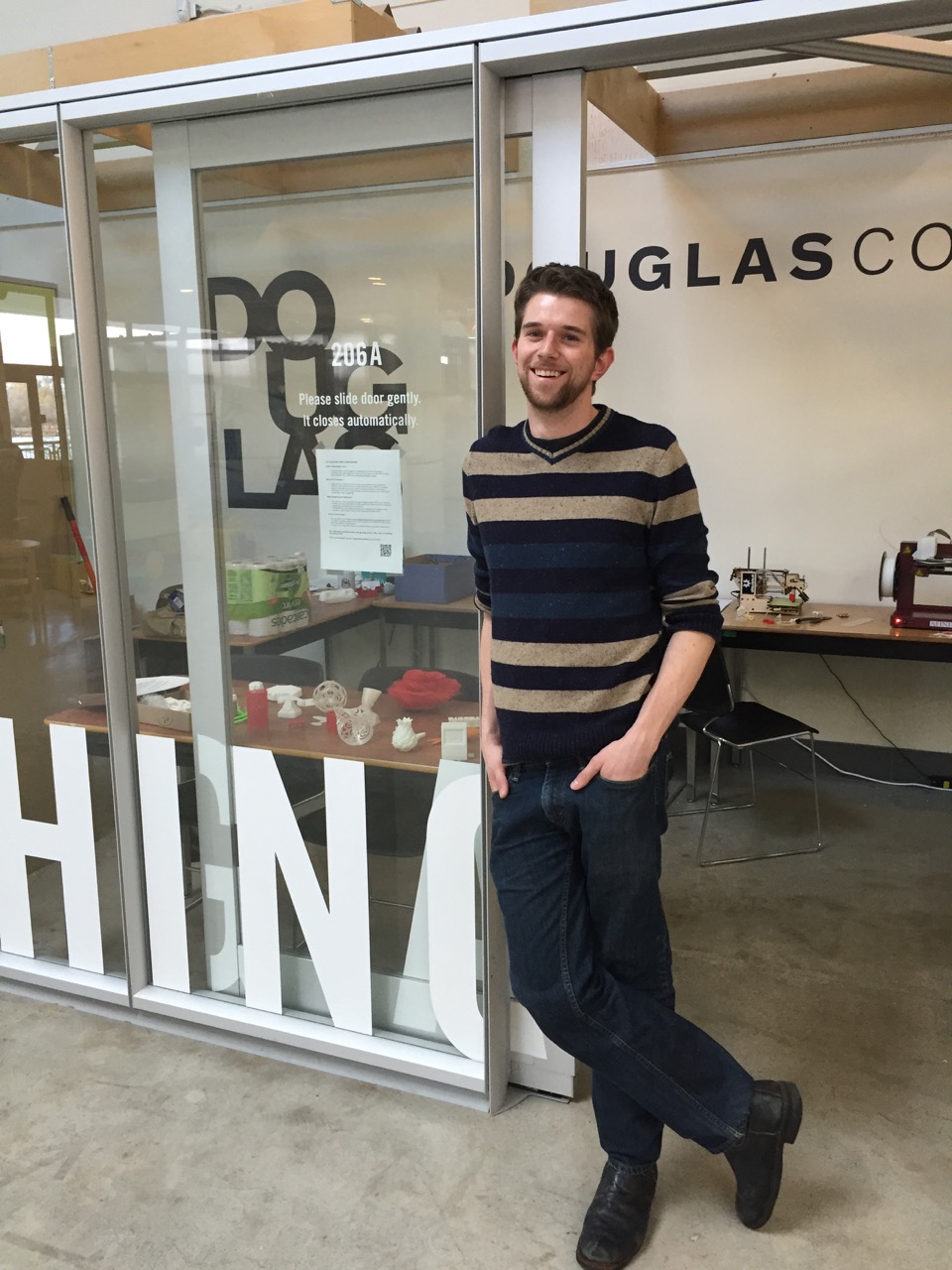
All that said, they are/were undergraduate students. I note this only because it means they have a lot of external pressures in terms of coursework–often a full load or more–and through no fault of their own, they do not possess the motivations of a graduate student working through their own research program. They’re busy with other awesome things in their lives, as they should be. The problem for the Lab then is how often can we be “open”? And the answer is, rarely. We manage a few hours early in the week, and one semi-full day a week. But the weekends and evenings, and even some consistent opening times over weeks have been difficult to cover. All this to say that staffing, and then finding something for this staff to do rather than just stand there, has been difficult to manage. It’s a tangled mess of needs: skills, time, tools, ideas, projects, people, direction, experimentation, competition. All of these things need to be clearly demarcated in order for me to feel like the Lab is being used to its proper extent–note I didn’t say “maximum productivity”; I said, “just enough to justify its existence.”
Amorphicisms and “Others”
All of the above leads to the inevitable: “so what are you doing, anyway?” Well, the direction has certainly changed. We’re working on a few different things, all of which are very different from what we thought we would be doing–sort of. As I noted above, one of the important takeaways, and the thing we got really right, was to let spaces like this emerge rather than trying to dictate the outcomes from the beginning. This is especially true when you don’t really know what your getting into in the beginning. So, we’ve targeted a few students who have expressed interest in the 3D printing parts of the lab and we’ve printed some things for them. This direct-line, one-on-one interaction has worked out well and it leverages our equipment but doesn’t take up too much time (see above). We’ve also started to work with faculty to see what they would like printed; fossils, topographical maps, are all on the radar now and we are filling a need in that area.
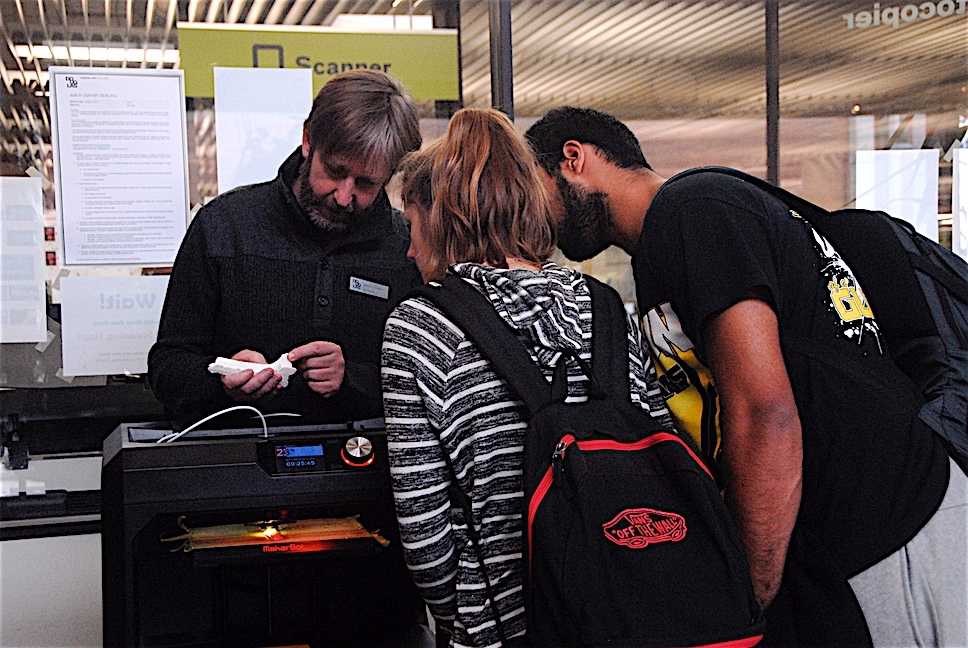
We’ve also starting doing “pop-up labs.” The labs, which take place in the library concourse the second Tuesday of every month and wherever else will have us, allow us to do some outreach, make the Lab across the tracks more visible at the College. These labs have been more effective than I ever thought they would be. Sure, these labs attract people because they present a novelty rather than because they do some sort of valuable task or perform a service, but these labs might show a different way to implement new technologies when all the above factors might be inhibiting that implementation.
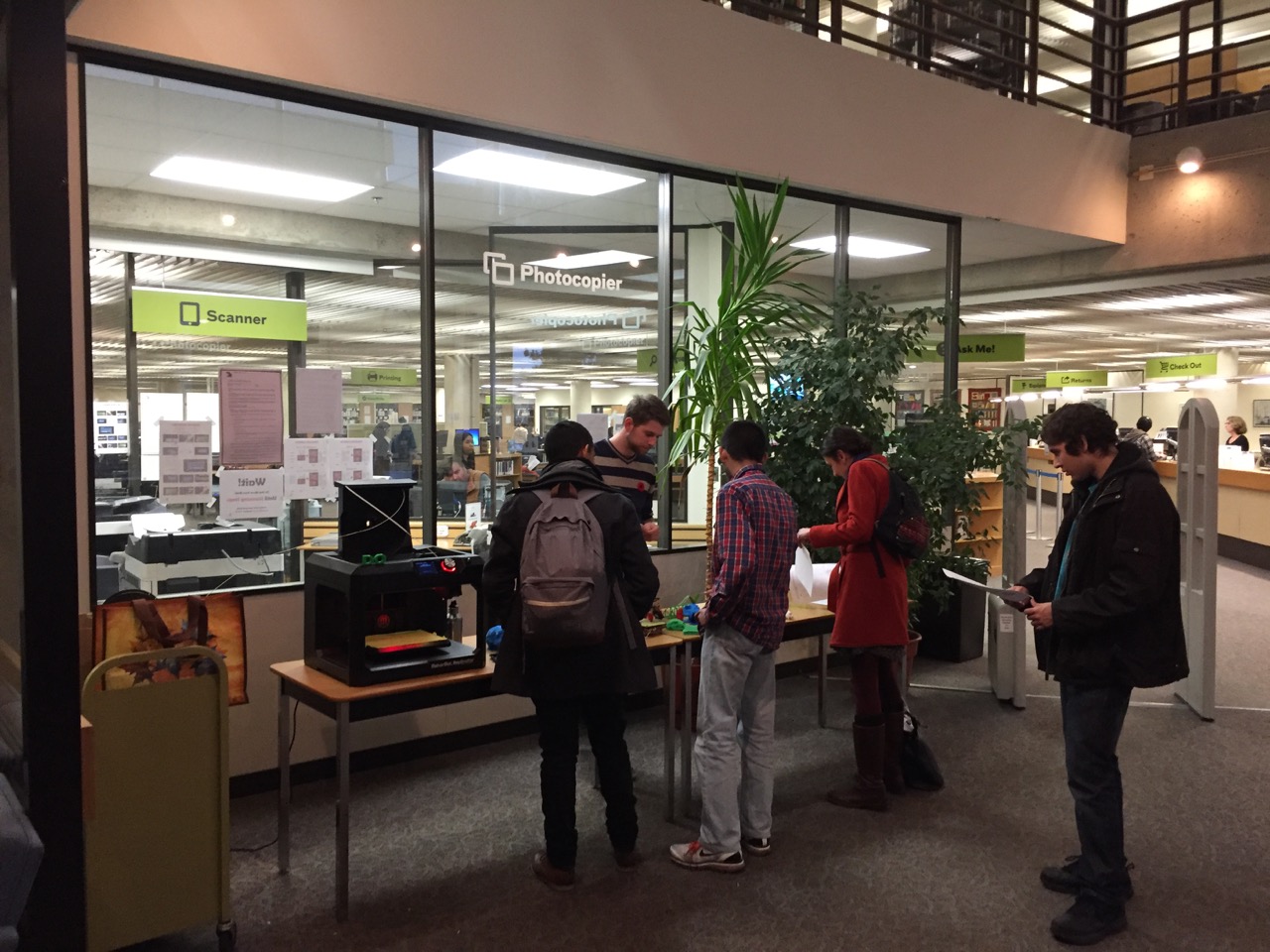
We often forget that the tools that are new tech are often incredibly portable. The MakerBot machine we have, the biggest one we have, still fits on a cart and is only about as big as a desktop computer. I can easily throw it in the trunk of my car. The other machines we have, which are even more portable, fit in a shopping bag and aren’t that difficult to manage on public transit. We’re pressed for space at the College so the Lab isn’t getting a dedicated space in the College anytime soon. That said, there’s no reason we can’t occupy display or common spaces–concourses, hallways, lobbies–in the College and deploy our “making” there. While this introduces some constraints–print time being one–these constraints offer interesting questions about the deployment of new technologies such as 3D printers. For instance, how is time itself one of the key “ingredients” in adopting new technology? Even a brief scan of the literature will tell you there’s a big Western irony in the hobbyist’s time–that she has time to play, tinker, and produce what a team of under-paid workers in China can produce 1,000,000 copies of in only a few days.
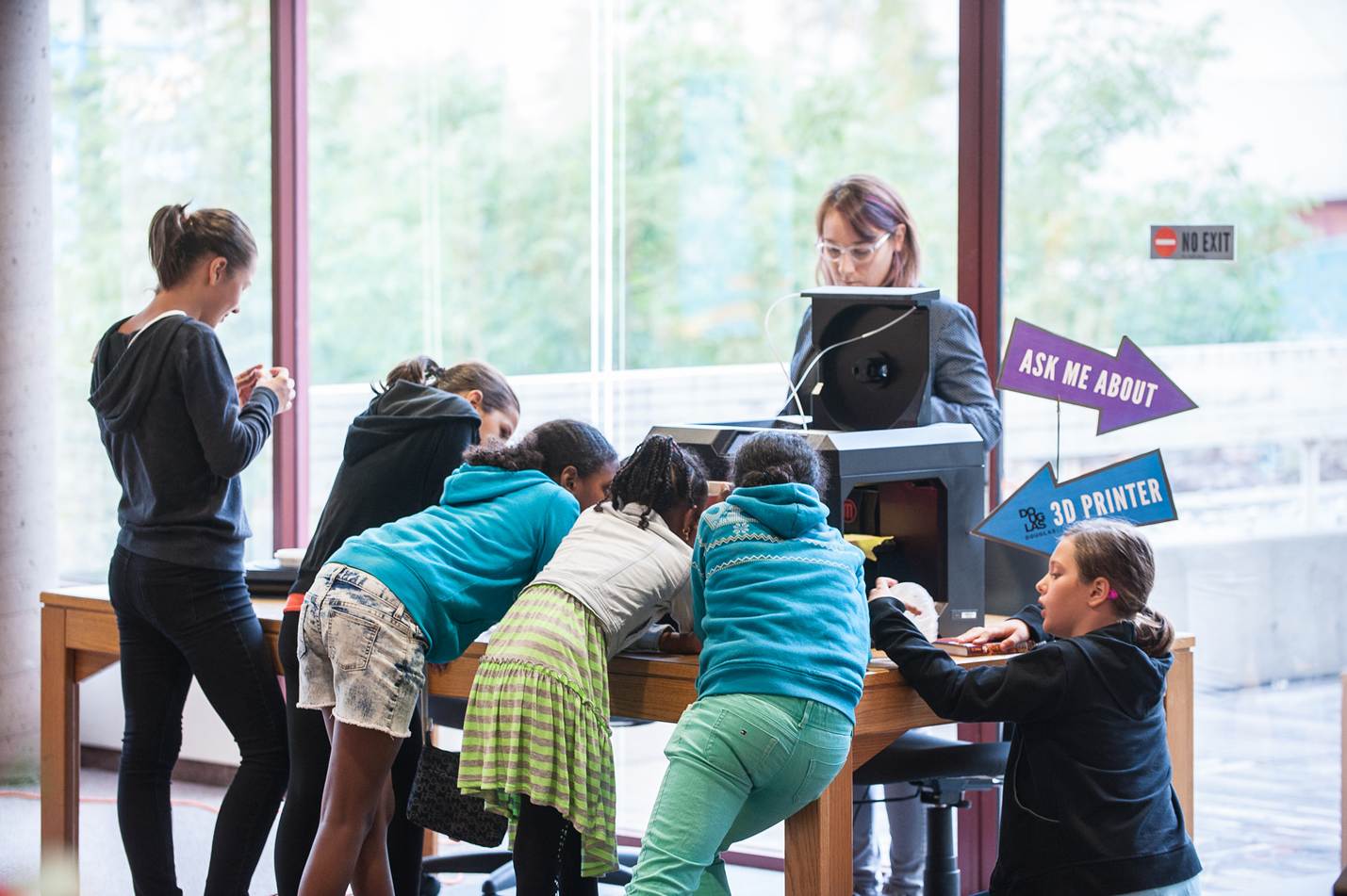
In short, I think these pop-up labs and mini-sessions will be a direction we pursue with more vigour going forward. While having the space itself is certainly more sexy, and more prestigious, and generates way more press, I’m not sure it yields the results we want.
The other thing we wanted to do from the beginning is make emerging technology accessible to those who might not have access to it. I think we overshot when we thought of this as a priority, here’s why: we didn’t account for the systems of emerging technology. So, we have an Oculus Rift. But, the computer hardware needed to run the Rift was beyond the scope of all but a very few of our students and we didn’t even have the in-house resources to assist–there’s a rant about faculty motivation here, but I don’t want to go there. Suffice to say, we now lend the Oculus out to whomever wants it with the caveat that they share their code when they’re done. It works, but it’s not what we wanted. The access mandate has changed then to a “give it to whomever can do something with it” mandate.
What We’d Say to Others
We’d say what we always say: “go for it!” Figure things out as you go. Make sure you have some sustained institutional support. Always do a reality check and be totally honest with yourself. Pull the plug when it’s not working and change directions. Learning is about failing a lot of the time.
And, in the interest of full disclosure, here’s what the lab has cost us so far:
| Costed Item (what we have / get in Canadian Dollars) | Actual Cost (what is costs in real world) | Real Cost (what it costs us) | Comments |
|---|---|---|---|
| Space | $1200 x 12 months = $14,400 | $50 x 12 = $600 | As I note above, couldn’t do the Lab at all without the generosity of the River Market. We pay $50 a month for maintenance. |
| MakerBot Replicator | $4000 | $4000 | Our biggest machine, but the one most prone to breaking |
| Afinia 3D printer | $750 x 2 | $1500 | Solid printers, but small print size; our most reliable machines |
| Oculus Rift | $500 | $500 | Development version. Needs a powerful computer to run, and we don’t have money for that, so… |
| Research Assistantships | $2500 a semester x 4 | $10,000 | We staff the summer too, but that’s really hard to do |
| Other costs | $1500 | $1500 | This is a ballpark figure to cover filament, brooms, dustpans, cleaner, gas, etc. |
| Director time (as portion of salary) | $8500 | $8500 | This amounts to 1/10 of my salary or 1/10 of my time at work |
These costs will continue as is, or go up. The costs of maintenance for the machines and the need to update the technology itself will eat up any gains made in efficiency. And, as the space gets used more, it needs more maintenance and more staffing. So, these numbers will probably stay pretty consistent over time, or go up, depending on how the Lab is scaled.
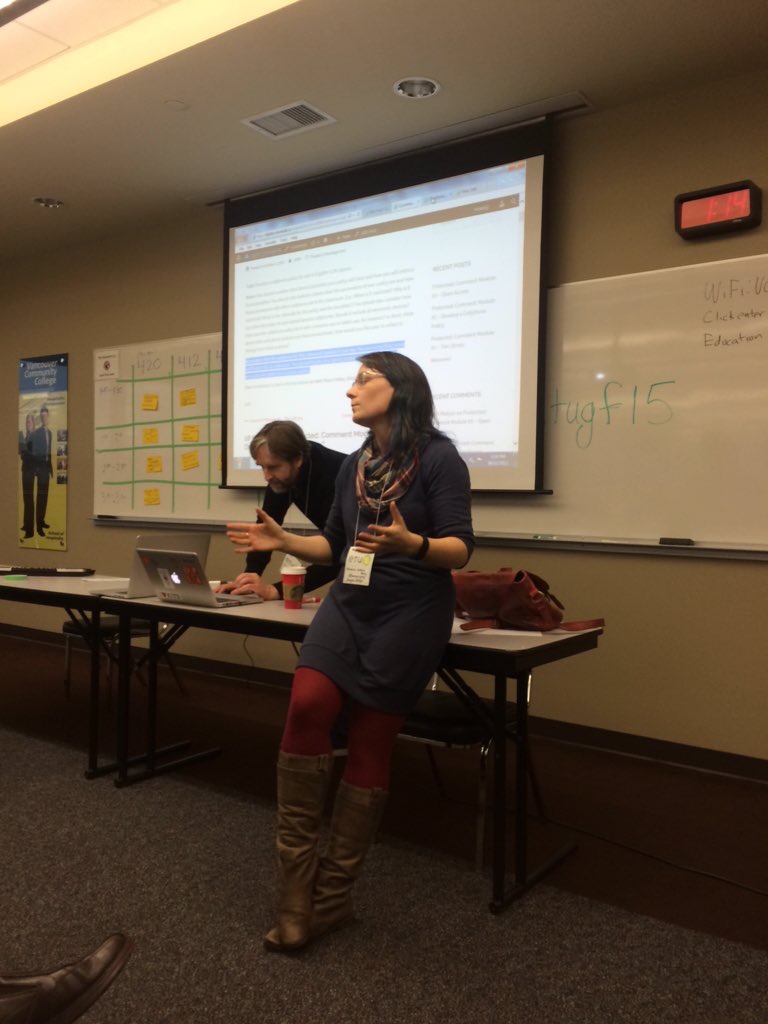
In the End
I’m not sure I want to say whether I think the Lab has been a successful venture. It’s certainly raised some interesting questions and problematized a lot of institutional processes and assumptions. At the same time, it takes up resources and I’m not sure the outcomes are worth the implementation. I think we have a long way to go before institutions of a medium size–like the College where I work–can sustain this kind of venture when it is not directly tied to program implementation or a core research concern that is spread across faculties. The Lab is in many ways the tip of the pencil, and if there’s no wood in the middle to support it during periods where the leaders, like me, lose energy then it’s dead in the water. All that said, there can be no doubt that the Lab has left a lasting impression on me and my approach to teaching and researching. As well, the students and faculty who have encountered it speak highly of it and most importantly ask questions related to technology and its implementation in Education–particularly in the Humanities because that’s where I’m at. Here’s to more years to come… or not. Evens.
Share this post:
Licensed under Creative Commons Attribution-NonCommercial-ShareAlike 2.5 Canada